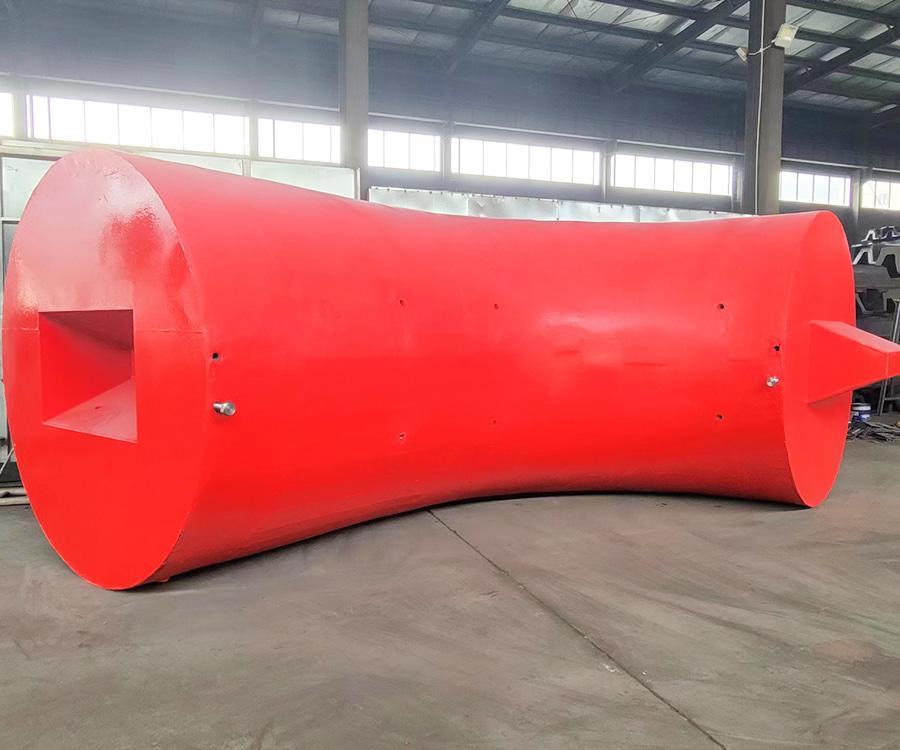Composite fenders have become increasingly common in marine and port infrastructure, offering practical benefits over traditional fender types. Designed to absorb and distribute the impact energy when vessels dock, composite fenders play a vital role in protecting both ships and piers from damage during berthing operations.
One key feature of composite fenders is their construction, which typically combines a high-strength outer shell made from fiberglass-reinforced plastic with an inner energy-absorbing core. This design allows the fender to effectively reduce impact forces, safeguarding vessels and infrastructure. The composite materials used are corrosion-resistant, which is especially valuable in harsh marine environments where steel fenders might degrade more quickly.
Compared to traditional rubber or steel fenders, composite fenders offer a distinct advantage in terms of durability and maintenance. Their resistance to saltwater corrosion and UV exposure means they require less frequent replacement or repair, reducing downtime and maintenance costs for ports and terminals. This durability makes them a reliable choice for locations with high vessel traffic or challenging weather conditions.
Another important aspect of composite fenders is their lightweight nature relative to steel alternatives. This characteristic simplifies installation and handling, reducing labor and equipment costs. For dock operators, this means faster deployment and easier repositioning when adapting to changing port configurations or vessel sizes.
The performance of composite fenders can be tailored to suit different berthing scenarios. Manufacturers can vary the size, shape, and energy absorption capacity based on vessel size and docking speeds. For example, larger container ships or tankers require fenders that can handle greater kinetic energy during berthing, while smaller vessels benefit from compact designs that provide sufficient protection without occupying excessive dock space.
Safety is a crucial consideration in port operations, and composite fenders contribute by minimizing the risk of damage to hulls and dock structures. This reduces repair costs and potential delays caused by damage incidents. The smooth surface of these fenders also helps prevent abrasion damage to vessel coatings, which can lead to corrosion if left untreated.
Environmental factors also support the use of composite fenders. Their materials are often recyclable, and their long service life means fewer replacements and less waste over time. For ports aiming to adopt sustainable practices, selecting composite fenders aligns with environmental responsibility goals.
In terms of cost, while composite fenders may have a higher initial purchase price than some traditional options, their lower maintenance requirements and longer lifespan offer value over time. For industrial applications where continuous operation and reliability are critical, these savings can be significant.
Maintenance of composite fenders typically involves routine inspections for surface damage or wear. Unlike steel fenders that can rust or dent, composite materials usually show minimal degradation unless exposed to severe impact or harsh chemical conditions. This makes it easier for port maintenance teams to keep the fenders in service-ready condition with less effort.
Overall, composite fenders are an effective solution for marine protection, combining energy absorption, durability, ease of handling, and environmental benefits. Ports, shipyards, and marinas can all benefit from adopting these fenders to enhance operational safety and reduce maintenance challenges.
By understanding the specific needs of each docking site, operators can select composite fenders that provide reliable performance while supporting efficient and safe vessel operations. Their adaptability and resilience ensure they remain a practical choice in a variety of marine settings.
